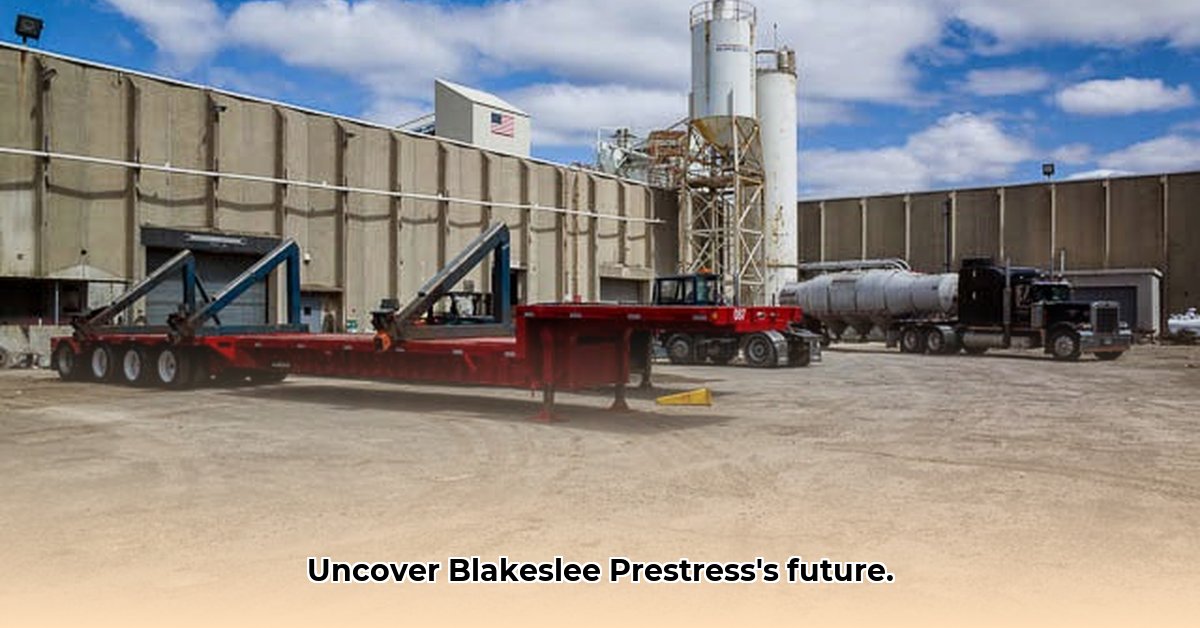
Prestressed concrete, a cornerstone of modern infrastructure, is undergoing a significant transformation driven by sustainability concerns and evolving market demands. This analysis examines the industry landscape, focusing on the opportunities and challenges faced by companies like Blakeslee Prestress Inc. in Branford, Connecticut, while acknowledging data limitations regarding the specific operations and market share of Blakeslee.
The Evolving Prestressed Concrete Market
The global prestressed concrete market is substantial, with applications spanning bridges, highways, buildings, and other infrastructure projects. However, the industry faces increasing pressure to reduce its environmental impact, primarily due to the high carbon footprint associated with cement production. This pressure translates into a demand for innovative, sustainable materials and production methods. The industry is also grappling with fluctuating raw material costs and intense competition. How effectively companies adapt to these pressures will significantly impact overall success.
Blakeslee Prestress Inc.: A Brief Overview
Limited public information restricts a detailed profile of Blakeslee Prestress Inc. Its location in Branford, Connecticut, suggests participation in the regional construction market, likely producing a range of prestressed concrete products for various applications. Further research would be required to fully assess the company’s market position, product offerings, and overall scale of operations.
Competitive Landscape and Industry Trends
The prestressed concrete manufacturing sector is highly competitive, with firms competing on price, quality, delivery times, and increasingly, sustainability. Companies that successfully differentiate themselves through specialized products, leaner operations, and a commitment to environmental stewardship will gain a competitive advantage. The industry's future hinges on technological advancements, including the development of lower-carbon concrete alternatives and more efficient manufacturing processes.
Market Analysis: Strategic Considerations
The following table examines short-term and long-term strategic goals for key stakeholders within the prestressed concrete industry:
| Stakeholder | Short-Term Goals (Next 1-2 Years) | Long-Term Vision (3-5 Years and Beyond) |
|---|---|---|
| Blakeslee Prestress Inc. | Improve operational efficiency; explore cost-reduction strategies without compromising quality. | Invest in R&D for sustainable concrete solutions; expand into potentially lucrative niche markets such as prefabricated components. |
| Competitors | Maintain price competitiveness; ensure reliable product delivery and high-quality service. | Develop innovative products focusing on sustainable and high-performance attributes; invest in supply chain resilience and diversification. |
| Construction Companies (Clients) | Secure reliable supply chains; access high-quality materials at competitive prices; meet project deadlines. | Prioritize sustainable construction practices; build strong relationships with reputable suppliers demonstrating environmental responsibility. |
| Governments and Regulatory Bodies | Maintain compliance with existing regulations; enforce environmental standards. | Implement supportive policies promoting sustainable building practices and use of green building materials. |
Risk Assessment Matrix
Successfully navigating the industry requires understanding and mitigating significant risks. The following matrix outlines key risks and recommended mitigation strategies:
| Risk Category | Likelihood | Impact | Mitigation Strategies |
|---|---|---|---|
| Fluctuating Raw Material Costs | Very Likely | Very Significant | Secure long-term supply contracts; explore alternative materials; diversify sourcing. |
| Intense Competition | Very Likely | Significant | Develop niche expertise; invest in R&D for innovative solutions; cultivate strong customer relationships. |
| Regulatory Changes | Likely | Significant | Maintain close monitoring of evolving regulations; develop proactive adaptation strategies. |
| Environmental Concerns | Likely | Very Significant | Embrace green technologies; implement carbon footprint reduction strategies; actively promote sustainability initiatives. |
| Supply Chain Disruptions | Somewhat Likely | Significant | Diversify suppliers; build resilient supply chain partnerships; optimize inventory management. |
Regulatory Landscape and Compliance
The prestressed concrete industry operates under a complex, and ever-evolving regulatory framework. Companies must ensure strict compliance with building codes, worker safety regulations, and environmental protection standards. Non-compliance can result in significant financial penalties and reputational damage. Proactive monitoring and adaptation to regulatory changes are crucial for continued operational success.
Future Outlook: Sustainability and Innovation
The long-term outlook for the prestressed concrete industry is positive, driven by ongoing infrastructure development coupled with growing emphasis on sustainable construction practices. Companies that embrace innovation, invest in research and development, and actively reduce their environmental impact are best positioned for long-term success. The successful integration of sustainable materials and processes will shape competitiveness and market leadership in the years to come.
Conclusion
The prestressed concrete industry faces notable challenges and exciting opportunities. Companies like Blakeslee Prestress Inc. that successfully navigate the complexities of the market, prioritizing sustainability and innovation, will establish a strong position for continued success in the years to come. The emphasis on sustainable practices will define the future of the industry, demanding continuous adaptation and a commitment to environmental responsibility.